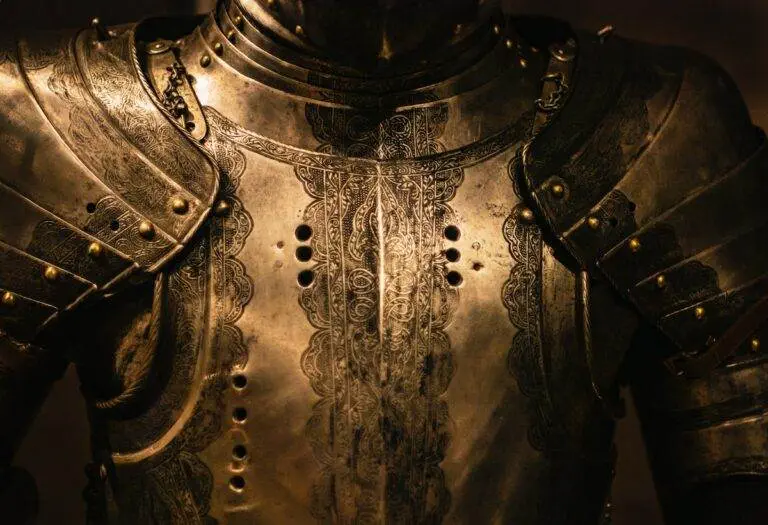Introduction to Middle English Alliterative Poetry
Middle English alliterative poetry emerged in the 14th century as a revival of the Old English alliterative verse style. It is characterized by a four-beat alliterative meter, a flexible number of unrhymed lines per stanza, and frequent use of alliteration, which is the repetition of initial consonant sounds. The alliterative form arose as a popular poetic style after the Norman Conquest in 1066 disrupted the Old English poetic traditions [1].
Table of Contents
The meter consists of four stressed syllables per line, with a varying number of unstressed syllables. Each line is divided into two half-lines with a caesura or pause in the middle [2]. Alliteration is used to bind the lines together, usually by repeating initial consonants in the stressed syllables. This creates a rhythmic, pulsing sound. The stanzas do not follow a fixed rhyme scheme.
Major works in Middle English alliterative verse include the poems of the Pearl Poet, such as Sir Gawain and the Green Knight, and William Langland’s Piers Plowman. The alliterative form allowed greater flexibility of expression compared to rhymed verse. It became popular for narrative religious poems and epic tales of adventure and heroism. The revival of alliterative verse marked an important evolution in English poetic form between the Old English and Chaucerian traditions.
Literary Elements and Techniques
Middle English alliterative poetry is characterized by the extensive use of alliteration, where the beginning consonant sounds of stressed syllables are repeated, often across lines of verse. Alliteration was a key unifying device that helped structure the poetry rhythmically and establish coherence between lines [1]. The caesura, or pause in the middle of a line, also played an important rhythmic role by breaking up the line into two half-lines. This created a pulsing, dance-like rhythm to the poetry when recited aloud.
In addition to alliteration and rhythm, poets utilized many rhetorical and stylistic devices that enhanced the richness and artistry of their narratives. They frequently employed figurative language like kennings, which substituted descriptive compound phrases for single nouns. Vivid sensory imagery and symbolism were also common techniques for bringing the scenes and characters to life. The poets were masterful storytellers, strategically structuring their long narratives and utilizing literary tools to highlight important themes, moments, and ideas [2]. Overall, the complex rhythms, rhetorical flair, and narrative sophistication of Middle English alliterative poetry established it as a distinctive literary achievement of the medieval period.
Themes and Subject Matter
Middle English alliterative poetry covers a wide range of themes that provide insight into medieval culture and values. Prominent themes include chivalry, courtly love, Christianity, and moral struggles. This body of literature often uses a medieval setting, drawing on Arthurian legends and hero’s quests. The poetry frequently focuses on nature, animals, seasons, and daily life in the Middle Ages, blending realism, fantasy, and the spiritual.

The ideals of chivalry and courtly love feature heavily, exploring the codes of conduct for knights and nobility. Christian themes and biblical references are common as well, reflecting the medieval period. Moral struggles represented include temptation, sin, redemption, and virtue. This allows the poetry to grapple with meaningful themes of the human experience.
By using a medieval setting rooted in legends and quests, the poems transport readers to another time and place. Descriptions of nature, animals, changing seasons, and humble daily activities provide a vivid, immersive backdrop. The mix of realism and supernatural elements creates a mystical, imaginative world for characters to explore moral dilemmas and challenges. Overall, the themes and subjects covered showcase a blend of religious teachings, fantasy, and earthly life in the Middle Ages.
Analysis of Major Works
The alliterative poems of the 14th century, including Sir Gawain and the Green Knight, Pearl, and Piers Plowman are considered among the greatest works of Middle English literature. These poems demonstrate the sophisticated use of alliterative verse and complex thematic development.
Sir Gawain and the Green Knight, considered one of the finest Arthurian romances, tells the story of Gawain, a knight of King Arthur’s court, who accepts the challenge of the mysterious Green Knight and embarks on a quest to uphold his chivalric ideals. The poem examines themes of temptation, honor, chivalry and Christianity through the trials of its hero. Gawain must resist the temptation of the lady of the castle where he stays while also completing his deal with the Green Knight. The rich descriptions and inner turmoil of Gawain make this one of the most psychologically complex medieval works.
The dream vision poem Pearl centers on a father mourning the loss of his young daughter. He falls asleep and encounters her spirit in a vision, imagining her as a pearl in heaven. She counsels him on accepting God’s will and letting go of earthly attachments. Pearl mixes Christian doctrine about salvation with courtly romance in its delicate verses and impassioned dialogues between the Dreamer and the Pearl-maiden. The poem provides insight into medieval spirituality and attitudes about death.
Piers Plowman, considered one of the greatest allegorical narratives of the medieval era, presents the narrator Will’s visionary dreams concerning man’s path to salvation. The characters represent vices and virtues in humanity as well as institutions and classes within 14th century society. Will searches for the true Christian life while confronting figures of greed, lust, and hypocrisy. The poem provides a sweeping critique of church corruption at the time through satire and allegory. Its vivid pilgrimage resonated with common people dissatisfied with social injustice and clerical abuse.
These three poems demonstrate the morality, romance, and social commentary woven into alliterative verse. Their examination of Christian virtue and salvation align with medieval worldviews, while their complex characters, evocative language, and subtle themes reveal emerging Renaissance sensibilities. The alliterative poems stand as some of the most important works bridging medieval and Renaissance literature in England. Their continued popularity and influence today demonstrates their lasting literary achievement.
Legacy and Influence
Middle English alliterative poetry had a significant influence and legacy beyond the medieval period. The alliterative form was used by a variety of poets in the 15th and 16th centuries before eventually falling out of favor after the Renaissance.
The most prominent poets to use alliterative meter in the 15th century were the Scottish Chaucerians. Poets like Robert Henryson, William Dunbar, and Gavin Douglas revived and adapted the alliterative form, often mixing it with other poetic techniques inspired by Chaucer. Their goal was to emulate Chaucer’s artistry while incorporating the alliterative traditions of an earlier age. This demonstrated the enduring appeal of alliterative verse even as rhymed iambic pentameter became the dominant poetic form.
In the early 16th century, Sir Thomas Wyatt introduced an alliterative form to English poetry called the “poulter’s measure.” This consisted of alternating twelve and fourteen syllable lines linked by alliteration and rhyme. While not strictly an alliterative revival, Wyatt’s innovation preserved the use of alliteration as a key poetic device.
The alliterative tradition truly waned after the Elizabethan era. Later poets like Milton, Donne, and Shakespeare favored rhyme over alliteration in most cases. However, there were traces of alliterative influence in some metaphysical poetry and dramatic verse. The legacy of medieval alliterative form can be seen whenever alliteration is used as a prominent poetic device.
In modern times, there have been occasional revivals and experiments using alliterative verse. Poets like Ezra Pound, W.H. Auden, Richard Wilbur and Seamus Heaney have written individual poems utilizing or referencing the medieval alliterative form. Heaney’s work demonstrates that the musicality and verbal density of alliterative poetry can still lend itself to creative expression in the current day. While no longer a dominant tradition, the Middle English alliterative poets established a versatile poetic form that still resonates centuries later.


